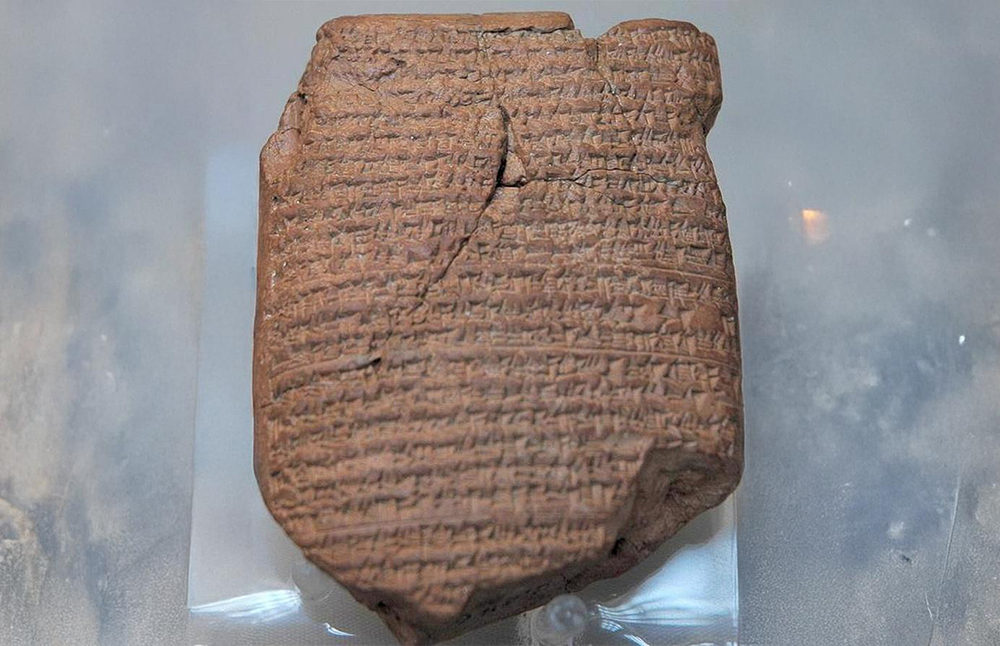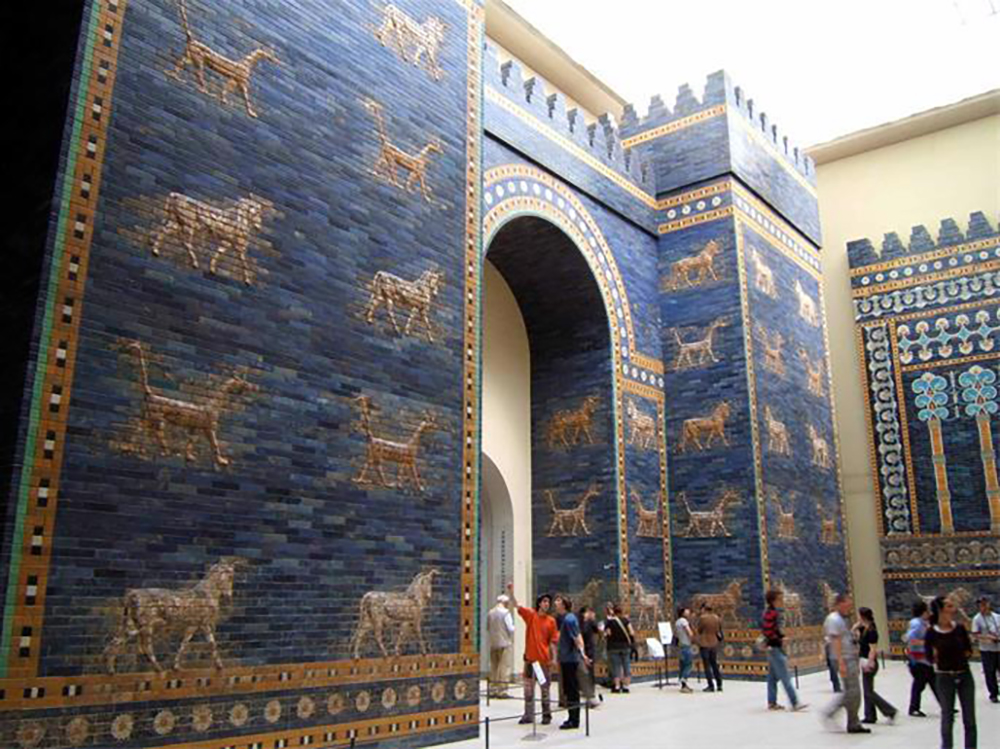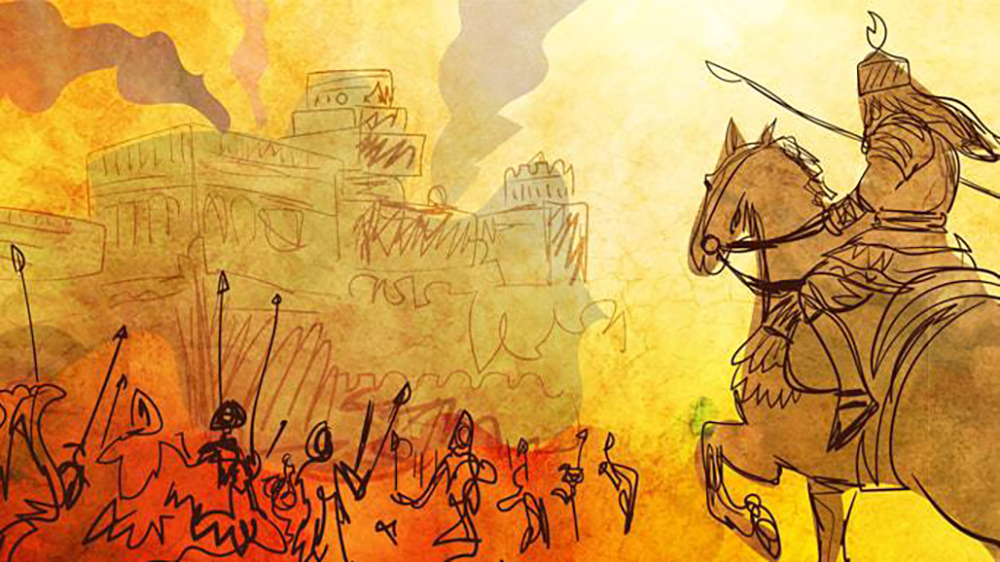|
Getting your Trinity Audio player ready...
|
By: Yehudis Litvak
- The Exile Began 11 Years Before the Temple Was Destroyed
The Babylonian King Nebuchadnezzar set out on an extensive campaign, intending to conquer the whole world. Among his intended targets was the small Kingdom of Judah.
At first, Nebuchadnezzar attempted to turn Judah into a vassal state that would faithfully pay tribute to the great Kingdom of Babylonia. King Jehoiakim, the king of Judah at the time, submitted to Nebuchadnezzar’s demands for three years but then rebelled.1
Nebuchadnezzar crushed the rebellion and captured Jehoiakim. He put him in shackles, intending to exile him to Babylonia. Jehoiakim was physically weak and he died as his captors dragged him along.2
Jehoiakim’s 18-year-old son Jehoiachin became the next king of Judah.3 His reign lasted for only three months before Nebuchadnezzar besieged Jerusalem and demanded the young king’s surrender.

Seeing no choice, Jehoiachin emerged and gave himself up to Nebuchadnezzar, together with his mother, his officers, and his servants. After taking them captive, the Babylonians entered the Temple and stripped it of all its gold.4
Before leaving Jerusalem, Nebuchadnezzar appointed a new king over Judah – Matanya, Jehoiachin’s uncle. Nebuchadnezzar renamed him Zedekiah.5
These events were significant for the Babylonians, and they recorded them in their chronicles—a series of about 45 clay tablets discovered in the 19th century. One of the tablets reads:
He [Nebuchadnezzar] camped against the city of Judah [Jerusalem] and on the second day of the month of Adar he took the city and captured the king [Jehoiachin]. He appointed a king of his own choice there [Zedekiah], took its heavy tribute and brought them to Babylon.6
Along with the deposed king, the Babylonians exiled 10,000 Jerusalemites to Babylon.7 Among them were Mordechai of Purim fame8 and the Prophet Ezekiel.9 Anyone with power, wealth, or influence was exiled: “No one remained except the poorest of the people of the land.”10
- Jehoiachin Was Eventually Treated Well
Jehoiachin made it safely to Babylon, where he remained for the rest of his life. During Nebuchadnezzar’s reign he was imprisoned, but when Nebuchadnezzar’s son Evil-Merodach took over the throne, he released Jehoiachin from prison:
And he [Evil-Merodach] spoke with him kindly and placed his throne above the throne of the kings who were with him in Babylon. And he changed his prison garb, and he ate meals before him regularly all the days of his life. And his meals, regular meals were given him from the king, each day’s need in its day, all the days of his life.11
In the early 1900s, German archeologist Robert Koldewey excavated the area of the famous Ishtar Gate that had served as a fortified entrance to Babylon. He discovered a collection of clay tablets containing Babylonian administrative records. The tablets list food rations for various foreigners employed or imprisoned in Babylon. Several of the tablets mention Jehoiachin, and some of them mention his sons.
For example, one tablet reads, “10 sila of oil to … Jehoiachin, king of Judah … 2 ½ sila of oil to the five sons of the king of Judah.”12 Another records, “10 sila to Jehoiachin … 2 ½ sila for the five sons of the king of Judah.”13

Sila was a Babylonian unit of volume, equivalent to about 1 liter.14
Compared to others mentioned in the tablets, Jehoiachin was given larger amounts, implying that he was treated with special honor.15
- The Al-Yahadu Tablets Tell How the Jews Settled In
Prophet Jeremiah, who remained in Jerusalem, sent a letter to the Jews in Babylon, in which he conveyed a message from G‑d:
Build houses and dwell [therein], and plant gardens and eat their produce. Take wives and beget sons and daughters, and take wives for your sons and give your daughters to men, and they shall bear sons and daughters, and multiply there and be not diminished. And seek the peace of the city where I have exiled you and pray for it to the L-rd, for in its peace you shall have peace.16
In the same letter, he wrote that the exile would last for 70 years, after which the Jews would be able to return to the Land of Israel.17
Ultimately, the community would grow even larger.
King Zedekiah reigned in Jerusalem for 11 years.18 Then he, too, rebelled against Nebuchadnezzar.19
Again, Nebuchadnezzar captured Jerusalem. This time, he burnt down the Temple and much of Jerusalem and demolished the city walls. The Babylonians exiled most of Jerusalem’s residents to Babylon. They left only the poorest of the poor to take care of the land and the vineyards.20
Until recently, not much information was available about Jewish life in Babylon during the early years of the exile. In 2014, UC Berkeley researcher Laurie Pierce and Leipzig University’s researcher Cornelia Wunsch published a book analyzing over one hundred documents written by Jews exiled to Babylon.21
It seems that the Jews in Babylon followed Prophet Jeremiah’s instructions:
Far from portraying a deported, old but impoverished, Judean elite, these documents provide glimpses into the lives of ordinary people in a rural setting: they till the land and build houses, pay taxes, and render services to the king.22
The texts were written on clay tablets. Later, more such documents were analyzed and the results published. Altogether, the collection of documents, which became known as the Al-Yahadu Tablets, contains over 200 texts.
The Al-Yahadu Tablets belong to private collectors. They were discovered not by archeologists but by antiquities dealers who sold them to private individuals. Therefore, the exact location where the tablets originated is unknown, but based on their contents, archeologists surmise that they were written in the town of Al-Yahadu, named after the Jews exiled from Jerusalem who were resettled there by Nebuchadnezzar.
Researcher Peter Zilberg places Al-Yahadu to the south of Nippur in modern-day southeastern Iraq.23 He believes the town was about 20 square kilometers in size, surrounded by canals and located near, though not on, the Chebar Canal mentioned by the Prophet Ezekiel.24
Based on the contents of the Al-Yahadu tablets, Professor Kathleen Abraham concludes:
Upon their arrival in Babylon, the Jewish exiles were put into royal service. Some of them subsequently led careers in the central administration, for instance as royal merchants, alphabet scribes and interpreters, but most were sent by the Babylonians to the countryside, in order to establish new settlements in previously uninhabited places.25
Al-Yahadu was one such settlement, part of the Babylonian policy of land-for-service. The exiles were given royal land and were obligated to perform work and military service and pay taxes to the government.
Several generations of the same Jewish families can be traced through the tablets. Though the families were brought to Babylon by force with only the clothes on their backs, over the course of years and generations these families grew and prospered. The two men most frequently mentioned in the tablets are Ahiqam and Ahiqar. Both were involved in the administration of the land-for-service sector. In addition, Ahiqam owned a brewery and a retail business, and Ahiqar organized agricultural management of his fields and provided credit to landholders to help them pay their rent.26
- Most Remained Even After Cyrus Let Them Go
Fifty-two years after Nebuchadnezzar destroyed the First Temple, a new king rose to power in Babylonia. His name was Cyrus the Great, and he was Divinely inspired to order the rebuilding of the Holy Temple in Jerusalem.27
Cyrus issued a proclamation allowing the Jews of his empire to return to Jerusalem and returned the Temple vessels (which had been looted by Nebuchadnezzar) to the Jews heading to Jerusalem.28
Led by Zerubbabel, a grandson of the exiled King Jehoiachin, 42,360 Jews returned to Jerusalem with the intention of rebuilding the Temple.29
The majority of the Jews, however, remained in Babylon. This is reflected in the Al-Yahadu tablets. The records of Ahiqam’s family continue past Cyrus’s reign. His business activities expanded and his wealth grew:
Ahiqam’s business activities presented risk as well as potential for profit, as is evident in his contribution to a joint venture to build a plow team. Against the considerable expense of bringing together two oxen, two farmers, as well as the seeder plow and seed necessary for efficient and intensive grain agriculture, Ahiqam and his partner also stood to share in the profits. Ahiqam’s business acumen is seen in his exchange of a donkey mare for an ox and the payment in silver made to compensate for the differential value between the animals; the expense incurred contributed to Ahiqam’s building a stock of animals that could be leased in future profit-making ventures. All of these mark him as an entrepreneur, interacting with the Babylonian population in and around Al-Yahadu.30
Upon Ahiqam’s death, his estate was divided among his five sons.
- Jews Would Remain There Until the 20th Century
Meanwhile, in the Land of Israel, Zerubbabel’s group did not succeed in rebuilding the Temple. The gentile people who moved to the Land of Israel during the Babylonian exile opposed the construction and complained to the king, accusing the Jews of rebellion. The king ordered the construction be halted.31
Years later, King Darius gave the Jews permission to rebuild the Temple.32 The Second Temple was built 70 years after the destruction of the First Temple, as Prophet Jeremiah had foreseen.
More Jews returned to the Land of Israel with Ezra, and then even more with Nehemiah. And yet, the largest Jewish community remained in Babylon.





